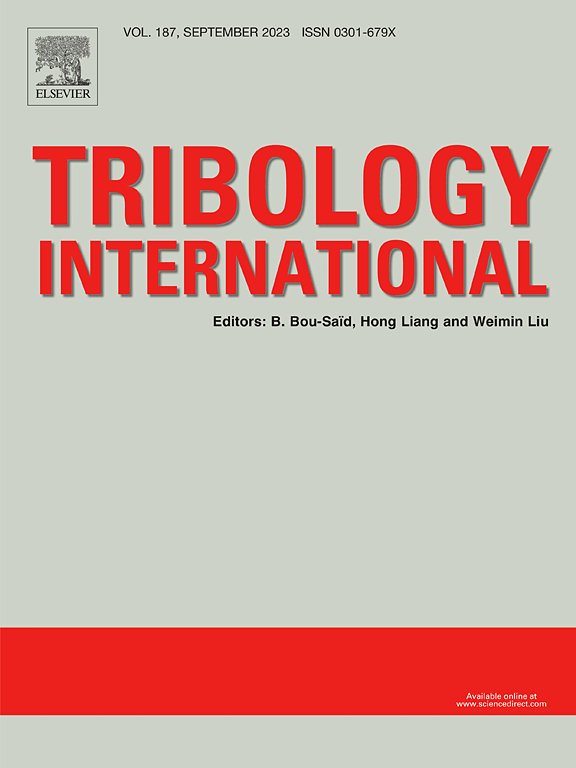纳米材料摩擦学研究进展:综述与展望
IF 6.1
1区 工程技术
Q1 ENGINEERING, MECHANICAL
引用次数: 0
摘要
MXenes是一种二维材料,随着人们对能源效率和环境可持续性的日益关注,它已成为增强机械系统润滑和减少磨损的有希望的候选者。本文综述了基于mxeni的纳米材料及其在摩擦学领域的潜在应用。MXenes独特的结构和化学性质使其具有良好的摩擦学性能,并与各种合成方法一起进行了讨论。重点介绍了MXenes作为固体和液体润滑剂的最新进展,强调了它们在不同操作条件下减少摩擦和磨损的有效性。然而,该综述还解决了与合成方法的可扩展性相关的挑战,以及在实际应用中对MXene性能进行实验验证的需求。通过研究目前的研究状况,本工作旨在阐明MXenes在摩擦学应用中的具体优势,并为其未来的发展方向提供见解。本文章由计算机程序翻译,如有差异,请以英文原文为准。
Advancements in MXene-based nanomaterials for tribological applications: Comprehensive review and future prospects
MXenes, a class of two-dimensional materials, have emerged as promising candidates for enhancing lubrication and reducing wear in mechanical systems amidst growing concerns over energy efficiency and environmental sustainability. This review provides a comprehensive overview of MXene-based nanomaterials and their potential applications in tribology. The unique structural and chemical properties of MXenes contribute to their favorable tribological performance, which is discussed alongside various synthesis methodologies. Recent advancements in using MXenes as solid and liquid lubricants are highlighted, emphasizing their effectiveness in reducing friction and wear under different operating conditions. However, the review also addresses challenges associated with the scalability of synthesis methods and the need for experimental validation of MXene performance in real-world applications. By examining the current state of research, this work aims to explicate the specific advantages of MXenes in tribological applications and provide insights into future directions for their development.
求助全文
通过发布文献求助,成功后即可免费获取论文全文。
去求助
来源期刊

Tribology International
工程技术-工程:机械
CiteScore
10.10
自引率
16.10%
发文量
627
审稿时长
35 days
期刊介绍:
Tribology is the science of rubbing surfaces and contributes to every facet of our everyday life, from live cell friction to engine lubrication and seismology. As such tribology is truly multidisciplinary and this extraordinary breadth of scientific interest is reflected in the scope of Tribology International.
Tribology International seeks to publish original research papers of the highest scientific quality to provide an archival resource for scientists from all backgrounds. Written contributions are invited reporting experimental and modelling studies both in established areas of tribology and emerging fields. Scientific topics include the physics or chemistry of tribo-surfaces, bio-tribology, surface engineering and materials, contact mechanics, nano-tribology, lubricants and hydrodynamic lubrication.
 求助内容:
求助内容: 应助结果提醒方式:
应助结果提醒方式:


